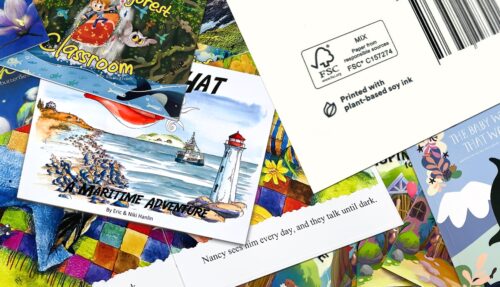We show you how to build a strong crowdfunding campaign to cover the costs of design, printing and distribution and to drive your first sales and reviews

Crowdfunding — which started out over a decade ago now as an offbeat way to gather funds for charity, start-ups, and creative projects — has long since joined the mainstream. In consequence, and because of its remarkable success, it has also become highly competitive. Each of the many crowdfunding portals may run several thousand projects at the same time.
Still, crowdfunding can be a fantastic option to raise capital for your self-publishing business. It’s proved both popular and effective for fiction authors, memoirists, comic book creators, board game designers, and other independent creatives. But to make it work, you need to know what you’re doing. You need a strong, proven strategy to stand out in the crowd and make sure you get the funding you need.
As one of the world’s foremost international offset printing companies, we work with mainstream publishing houses, start-ups, and independent publishers alike. Our analysis of successful campaigns across all the major platforms reveals common strategies which contribute to an effective campaign. Optimizing your campaign involves a lot of work and can seem overwhelming. But take it one step at a time, and you’ll find it’s worth the effort. Here are five proven steps to maximize your campaign’s chances of success:
1. Choose the right platform
Different crowdfunding platforms have different systems and emphases. It’s important you choose the platform which will best match your project. So, you’ll need to do your research. Check out the most high-profile campaigns and evaluate whether the platform prefers individuals or companies, books, comics, or games. The two major categories of crowdfunding platforms are reward-based and investment-based. Which you choose depends on the scope of your project and your long-term aims.
Reward-based platforms
Kickstarter and Indiegogo are the most popular portals to reward-based crowdfunding. Supporters make donations for rewards. Rewards can be coupons, sneak previews, tickets, visits, merchandise, signed copies, shoutouts, anything you think your supporters will value. These work well for one-off projects and the creative industries. Kickstarter is especially valuable for comic book creators and board game designers. It can work well for book publishers, too, especially if you’re planning an ongoing series. If you run a campaign with Kickstarter, you must meet 100 percent of your funding goals to get a payout.
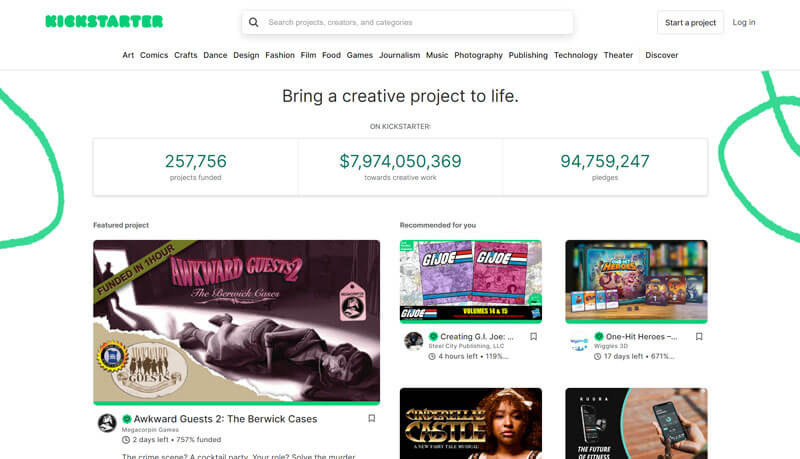
With Indiegogo, you’ll pay them a percentage of funds you raise, but you’ll receive all your pledges, even if you fall short of your goal.
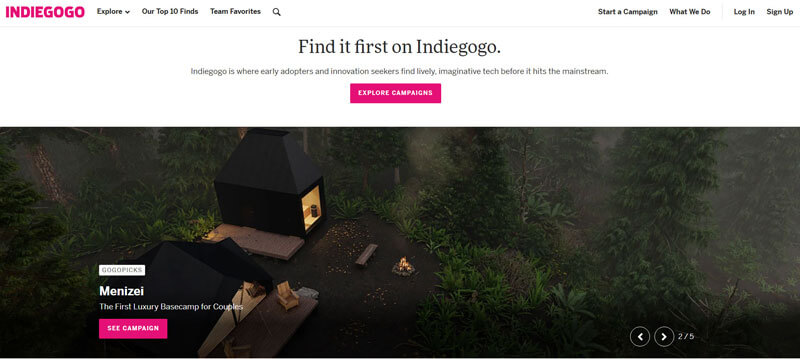
Investment-based platforms
Crowdfunder and Circle Up are the most popular equity or investment-based crowdfunding platforms. Crowdfunder is UK-based and focuses on projects with a community or social benefit. Circle Up is solely commercial in scope.
Following this model, supporters make a long-term investment in your business or start-up project. It’s like having shareholders. They invest funds, and you promise a return on that investment.
To use Crowdfunder, you’ll pay a fixed fee.
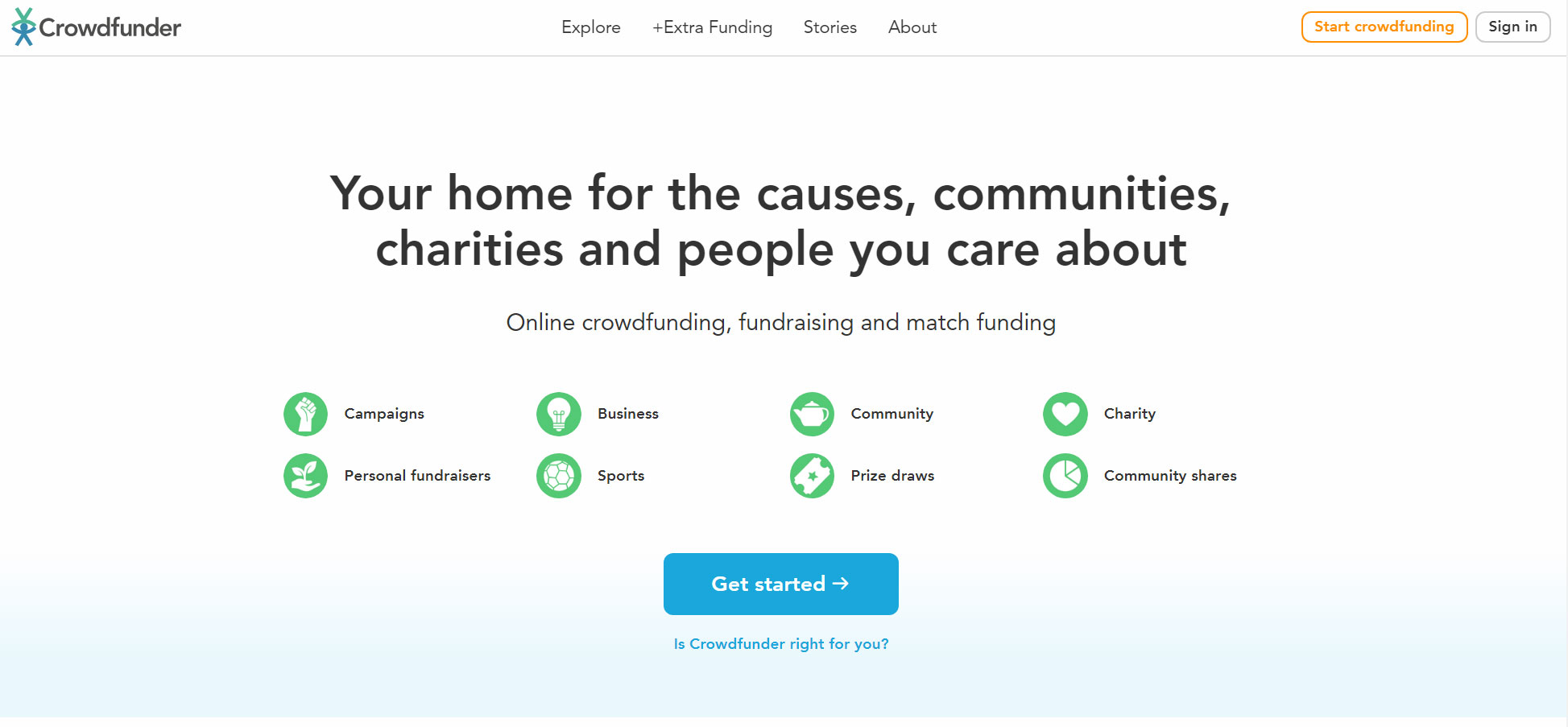
Circle Up takes a percentage of the investment you raise. Obviously, these are not aimed at one-off or experimental projects. But they’re worth checking out if you have bigger ambitions such as setting up a small press or building a game publishing brand.
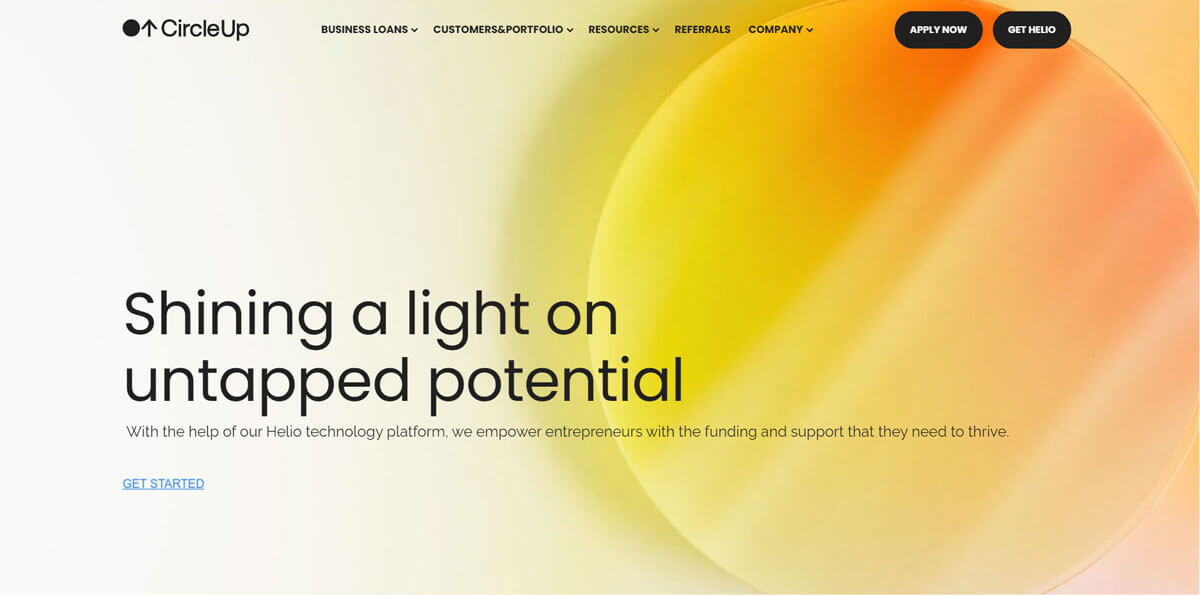
2. Tell a great story
Crowdfunding isn’t like other forms of marketing. To make a success of it, you need to get your head round the fact that it’s not advertising; it’s all about relationship, communication, and community. You’re not selling a product or a service. People who visit crowdfunding websites are looking for stories they can believe in. They’re looking for causes to support. They’re also looking for an emotional experience. There are two ways you should tell your story: through the written word and through video.
Write a compelling narrative
Your story has both to show your sound business sense and inspire a powerful emotional response. The most effective stories explain the following points:
- your motives
- your inspiration for the idea
- why you believe in it
- how it will make the world a better place
- and the struggles you overcame to realize your dream
Be explicit in your request for support. You can’t do it without supporters and you needn’t be shy about saying so. People who visit crowdfunding sites are actively looking for good projects to support. They want to fund you. So, pitch to them.
Shoot a high-quality video
Research shows that video pitches increase funding by over 50 percent. You should tell the same story in your video as you tell in your narrative section. The difference is you can use images, personality, music and testimony to engage your prospects’ emotions. Make the last request by looking straight to camera, making eye contact with the viewer.
Script your video before you shoot, or engage a professional writer to write it for you. Use the best quality equipment you can afford or engage a professional company to make the video on your behalf. Even if your equipment is not the best, make the video anyway. Any video is better than no video. Seriously. That’s how important a video is to a successful campaign.
3. Turn the focus on your supporters
This is something we’ve seen that almost all failed projects got wrong and all successful projects get right. Your project mustn’t be about want you want but what you can give. It sounds paradoxical, we know, but you’d better believe it if you want a successful campaign. It’s true you are asking for money for yourself. That’s the bottom line. But you must shift the focus to the benefits your supporters will receive. Those benefits are both material and personal.
Material rewards
Material rewards for a reward-based campaign — such as you might run on Kickstarter for your book, comic, or board game, should be the best, quirkiest, and most valuable you can imagine and give. If you’re short of ideas, research. The main platforms leave their historic campaigns online forever. Check out the successful ones to see what they offered and get inspiration for your own campaign. For investment-based campaigns, the material reward is simpler (but much less fun!) as it’s a straightforward percentage of return on your profits.
If you choose to print and manufacture your product with us, and you’re using Kickstarter as your platform, we’ll offer you a generous discount coupon so long as you make it clear on your campaign pages that you’re working with QinPrinting. And whether or not you choose Kickstarter, we can still offer you a vast array of supplementary products — such as bookmarks, leaflets, coupons, special editions, and more — which you can use as promotional material and rewards.
Personal rewards
For both types of campaign, the personal rewards for your supporters may be a letter of thanks, their name on an honor roll, or the knowledge they are making the world a better place. Again, do research. There’s no harm in copying a strategy that’s already proven to work!
4. Establish a leading investor before you start
Not everyone has a personal contact with someone famous in their field, we know. But think creatively about getting someone with name recognition to back you. Many successful and well-known people are content to support others just starting out. If you’re a writer, reach out to your favorite authors or book reviewers; likewise, if you’re creating a comic or graphic novel; as a board game designer, ask your favorite creators and influencers. They may say no, but you should give them the chance to say yes first!
Make a wish-list of people you’d love to validate your campaign. Approach them one at a time before your campaign goes live. Don’t be frightened. They’re just people. Pitch them as you would any other prospect, but be sure to tell them why you’d value their recognition. It’s easier than you think to get an influencer on board if you have an excellent project and you’re not afraid to ask. We know. We’ve seen it happen.
This person will be your lead investor or supporter. They validate what you are doing and lend their authority to your enterprise. Ask them for a photo and a quote, an interview, or a short video endorsement. They’ll also make the first donation. When you go live, you’ll hit the ground running and avoid the $0 starting barrier.
5. Plan everything from start to finish before you go
A campaign may only be live for a few months, but the most successful campaigners spend many more months planning, testing, and optimizing everything well before launch. Expect every outcome and have a strategy in place to respond to overwhelming success, as well as a contingency, in case things don’t work out. Have a well-structured, research-based campaign is key. As is having a back-up plan for every foreseeable contingency.
Communication, conversation, and conviction
A crowdfunding platform isn’t Craigslist or FreeAds. There’s no set-and-forget mode. It’s all about engagement. Be present and available throughout your campaign. Build conversations with your supporters. Build a community. Over-deliver on all your promises. If you’re smart, you’ll devise ways of keeping these supporters on board long after the campaign ends. If you do things right, you’re not only raising finance for your project, but recruiting advocates, customers, fans and supporters who will be the engine driving your future success.
Talk to us! We're here to help
Crowdfunding is one of the most exciting and effective ways of raising capital and engaging interest in your self-published book, comic, or board game. To make it work, think ahead, plan, tell a great story, engage with your supporters, build a community, and deliver more than you offer. It’s a lot of hard work, but if you do it right, it will repay dividends for years to come.
We hope you’ve found this post helpful and inspiring. Our aim is to provide you with the keys to launching a crowdfunding campaign that’s got an excellent chance of success. If you need help with design, artwork pre-press, printing, component manufacture, or other services related to self-publishing a book, comic, or board game, contact us today to find out how we can help, from world-class printing and binding services at unbeatable prices to helpful design templates, rewards and thank you cards for backers, discounts and more.










